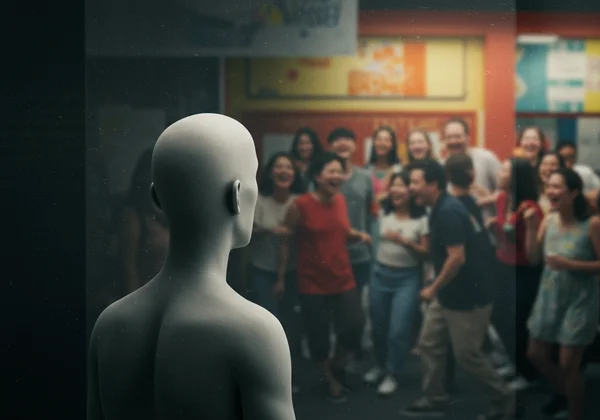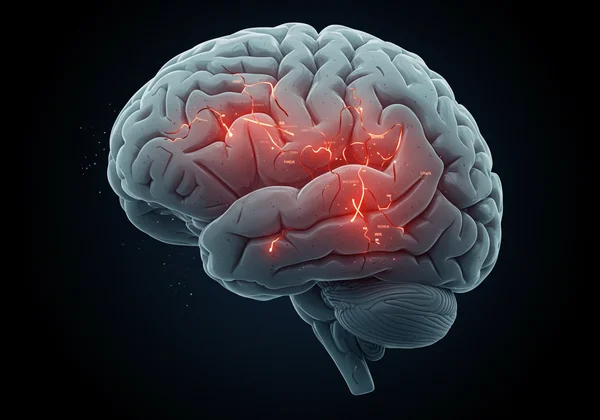Anhedonia & PTSD: Emotional Numbness After Trauma
When trauma leaves you feeling numb, joy can seem like a distant, forgotten memory. Many survivors find themselves disconnected from the world, watching life happen without truly feeling it. This guide explores anhedonia—the inability to feel pleasure—as a critical yet often misunderstood symptom of PTSD. If you're wondering why you feel so emotionally detached after a life-altering event, understanding this connection is the first step toward reclaiming your capacity for joy. How do you test for anhedonia when you feel lost? A confidential anhedonia test can offer a starting point for reflection.
This journey of understanding can begin with a simple step. A scientifically-based online anhedonia test can provide a private, insightful look into your emotional state, helping you make sense of your feelings.

Understanding Anhedonia in the Context of PTSD
Post-Traumatic Stress Disorder (PTSD) is more than just flashbacks and anxiety. It fundamentally changes how you experience the world, and one of its most profound impacts is on your ability to feel positive emotions. This is where anhedonia comes in, acting as a quiet but heavy blanket over your emotional life.
What is Anhedonia, Really?
At its core, anhedonia is the reduced ability to experience pleasure from activities you once enjoyed. It’s not sadness or grief; it’s the absence of joy. Think about your favorite song, a delicious meal, or the warmth of a hug. If these experiences now feel flat or unfulfilling, you may be experiencing anhedonia. This pleasure capacity deficit can manifest in two main ways: social anhedonia (a lack of enjoyment from social interactions) and physical anhedonia (a reduced ability to enjoy physical sensations).
The Overlap: Anhedonia vs. Other PTSD Symptoms
It’s easy to confuse anhedonia with other symptoms of PTSD. Emotional numbing, for example, is a broad term for feeling detached from others and your own emotions. Anhedonia is a specific type of this numbness, focused squarely on the loss of pleasure and positive feelings. While hypervigilance keeps you on high alert for danger, anhedonia quietly removes the rewards that make life feel meaningful. Recognizing it as a distinct symptom is crucial for finding the right path toward healing and understanding.
Why Trauma Leads to Emotional Numbness
The link between trauma and anhedonia isn't a sign of weakness; it's a deeply rooted biological and psychological response. After a traumatic event, your brain and body go into survival mode, and sometimes, the systems that regulate joy and connection get disrupted in the process.
The Brain's Response: How Trauma Affects Reward Pathways
Your brain has a sophisticated system known as the reward pathway, primarily driven by the neurotransmitter dopamine. This system is responsible for feelings of pleasure, motivation, and reward. When you experience something enjoyable, dopamine is released, teaching your brain to seek that activity again. Trauma can severely disrupt this system. Chronic stress floods the body with cortisol, which can damage the very circuits that process pleasure. As a result, the brain becomes less responsive to positive stimuli, making it difficult to feel joy or motivation.

Survival Instincts: When Numbness Becomes a Coping Mechanism
From a psychological perspective, emotional detachment can be a protective shield. When emotions become too overwhelming or painful, the mind may numb itself to prevent further suffering. This coping mechanism, while helpful in the immediate aftermath of trauma, can become a long-term pattern. You might unconsciously learn to suppress all emotions—both good and bad—to avoid re-experiencing pain. Over time, this self-preservation tactic can evolve into chronic anhedonia, leaving you feeling empty and disconnected from the vibrant parts of life you once cherished. If this feels familiar, a confidential self-assessment can help you explore these feelings safely.
Recognizing Signs of Anhedonia After Trauma
The loss of interest after trauma can be gradual and subtle, making it hard to identify at first. You might simply feel "off" or different without being able to pinpoint why. Understanding the specific signs can help you connect the dots between your past experiences and your current emotional state.
Subtle Shifts: From Joyful Hobbies to Indifference
Think back to the activities that used to light you up. Was it painting, hiking, listening to music, or spending time with friends? Anhedonia seeps in and replaces that enthusiasm with indifference. You might stop engaging in hobbies not because you're busy, but because they no longer bring you any satisfaction. The effort seems pointless when the emotional reward is gone. This isn't laziness; it's a key symptom of a deeper struggle and a sign that your mental health needs attention.
Impact on Relationships and Daily Life
Anhedonia doesn't just affect your hobbies; it impacts your connections with others. Social interactions can feel draining when you can't experience the joy of companionship or the warmth of intimacy. You may find yourself withdrawing from loved ones, not out of anger, but because you feel you have nothing positive to contribute. This can lead to profound loneliness and isolation, worsening the symptoms of both PTSD and anhedonia. Daily routines can also become a chore, as the small pleasures that once motivated you—like a morning coffee or a walk in the park—no longer provide a lift.

Finding Your Path Forward: Coping & Support
Recognizing anhedonia is the first, most crucial step. The next is understanding that healing is possible. Reconnecting with joy after trauma is a gradual process that involves both professional guidance and personal strategies to gently re-engage with the world.
Therapeutic Approaches for Trauma-Related Anhedonia
Professional support is vital when dealing with ptsd emotional numbness. Therapies specifically designed for trauma are highly effective. Modalities like Trauma-Informed Cognitive Behavioral Therapy (CBT) can help you reframe negative thought patterns, while Eye Movement Desensitization and Reprocessing (EMDR) helps the brain process and integrate traumatic memories. Somatic Experiencing focuses on releasing trapped trauma from the body. These approaches don't just address fear and anxiety; they help restore your brain's capacity for safety, connection, and ultimately, pleasure. A great first step can be taking a free anhedonia test to bring to your first therapy session.
Self-Care Strategies to Rebuild Connection and Joy
Alongside therapy, you can incorporate gentle practices into your daily life to help reawaken your reward system.
-
Behavioral Activation: This simple but powerful technique involves scheduling small, positive activities, even if you don't feel motivated. The goal isn't to force happiness but to re-establish a routine of engagement. Start with something minor, like listening to a single song or stepping outside for five minutes.
-
Mindfulness and Grounding: Trauma can leave you feeling disconnected from your body. Grounding exercises, like focusing on the sensation of your feet on the floor or the texture of a soft blanket, can help you feel more present. Mindfulness helps you observe your feelings without judgment.
-
Gentle Movement: Exercise like walking, yoga, or stretching can help regulate the nervous system and naturally boost mood-lifting neurochemicals. The focus should be on gentle, consistent movement rather than intense workouts.

Reclaiming Joy: Taking the First Step After Trauma
Living with emotional numbness after trauma can feel incredibly isolating, but you are not alone. Anhedonia is a real and valid response to overwhelming experiences, and understanding its roots in PTSD is a powerful act of self-compassion. The path to reclaiming joy is not about erasing the past, but about gently rebuilding the pathways to pleasure and connection in the present.
Your journey toward healing begins with awareness. If you recognize yourself in these words, the next step is to gain clearer insight into your emotional landscape. Take the confidential and science-backed anhedonia test today on our homepage. It's a simple, immediate, and private way to better understand your feelings and empower yourself with knowledge on your path to rediscovering a life filled with meaning and joy.
Frequently Asked Questions About Anhedonia & Trauma
Does trauma-induced anhedonia ever go away?
Yes, absolutely. With the right support, including trauma-informed therapy and consistent self-care strategies, it is possible to heal the brain's reward pathways and rediscover your capacity for joy. Healing is a process, but recovery is achievable.
Can people with PTSD-related anhedonia still feel other emotions?
Often, yes. While positive emotions like joy and excitement are diminished, individuals can still experience negative emotions like anger, fear, or sadness quite intensely. Sometimes, these negative feelings can feel like the only ones accessible, which is why anhedonia is so challenging.
What is the root cause of anhedonia after trauma?
The root cause is a combination of neurobiological and psychological factors. Trauma disrupts the brain's dopamine-driven reward system, making it less sensitive to pleasure. Psychologically, emotional numbing serves as a defense mechanism to protect against overwhelming pain, which can inadvertently blunt positive feelings as well.
How does anhedonia in PTSD differ from general depression?
While they overlap, anhedonia in PTSD is directly linked to the trauma response. The emotional numbing is often a way to cope with trauma-specific triggers and memories. In contrast, anhedonia in major depression may arise without a single, identifiable traumatic event. To better understand your own experience, you can get instant insights with a simple assessment.
Can trauma cause permanent emotional numbness?
While it can feel permanent when you're in the midst of it, emotional numbness from trauma is typically not a permanent state. The brain has a remarkable ability to heal and form new connections, a concept known as neuroplasticity. Consistent, targeted therapeutic work can help restore emotional function over time.